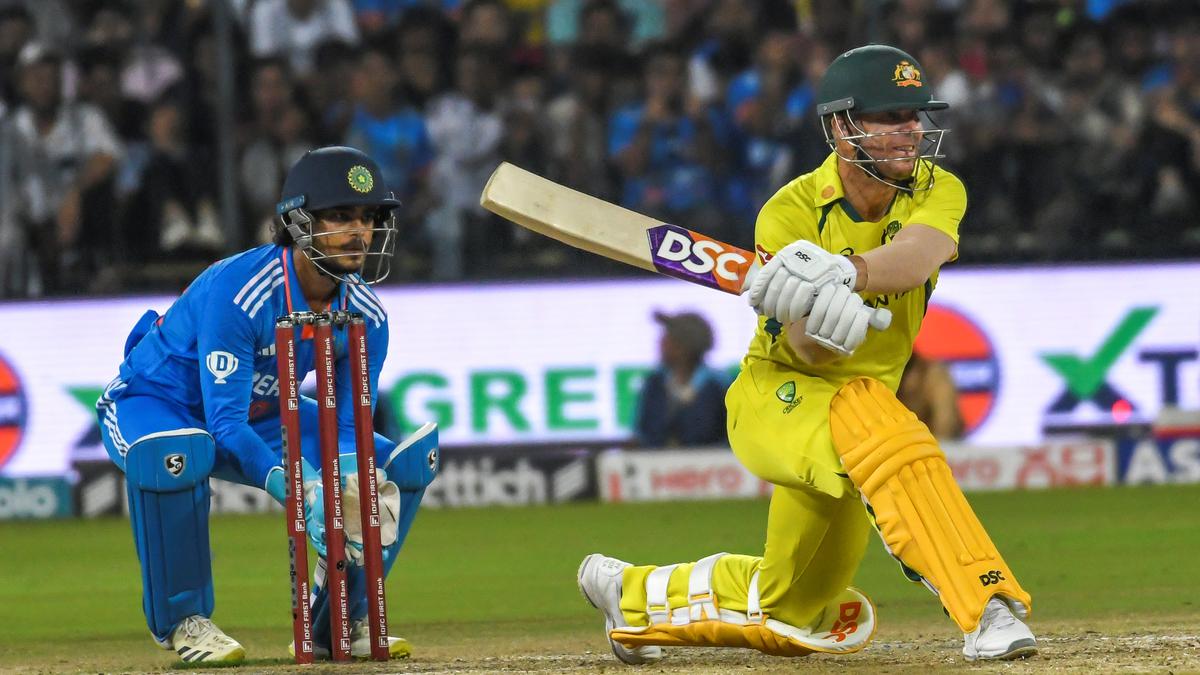In the 2nd ODI between India and Australia in Indore, David Warner decided to bat right-handed against Ravichandran Ashwin. This was a surprising move, as Warner is a natural left-handed batsman. However, Warner has had a difficult time against Ashwin in recent years, and he was clearly looking for a way to change things up.
David Warner’s Struggle Against Ashwin
David Warner has been struggling against Ravichandran Ashwin in recent years. In their last 10 meetings, Ashwin has dismissed Warner 6 times. Warner’s average against Ashwin is just 21.50.
Ashwin’s success against David Warner is due to a number of factors. Firstly, Ashwin is a very skilled bowler. He is able to bowl with great accuracy and control. Secondly, Ashwin is very good at bowling in different areas. He can bowl outside the off stump, inside the leg stump, and over the wicket. This makes it difficult for batsmen to read his bowling.
Finally, Ashwin is very good at exploiting batsmen’s weaknesses. He knows that Warner is susceptible to the carrom ball. As a result, he often bowls the carrom ball to Warner.
Warner’s Decision to Switch to Right-Handed Batting
Warner’s decision to switch to right-handed batting against Ashwin was a bold one. It was a clear sign that Warner was desperate to find a way to counter Ashwin’s bowling. Warner’s decision was also a risky one. He had never batted right-handed in a competitive match before. There was a good chance that he would get out quickly.

However, Warner was willing to take the risk. He knew that he needed to find a way to score runs against Ashwin if Australia was to win the match.
The Results of Warner’s Decision
Warner’s decision to switch to right-handed batting did not pay off. He was dismissed by Ashwin for 53 runs off 39 balls.
Ashwin bowled a carrom ball to Warner. Warner tried to reverse sweep the ball, but he missed it and was trapped LBW.
Also read: Team India Thrashes Australia by 5 Wickets in 1st ODI
Analysis of Warner’s Decision
Warner’s decision to switch to right-handed batting was a bold one, but it ultimately backfired. He did not score many runs and he got out to the same bowler that he was trying to counter.
However, Warner’s decision was also understandable. He was struggling against Ashwin and he was desperate to find a way to score runs.
Warner’s decision is a reminder that there is no one-size-fits-all solution to countering Ashwin’s bowling. Batsmen need to find their own way to score runs against him.
Warner’s Right-handed Batting Technique
Warner’s right-handed batting technique is not as polished as his left-handed technique. However, he is still a competent batsman, and he was able to score some runs against Ashwin batting right-handed.
Warner’s right-handed technique is more open than his left-handed technique. He also tends to play with a straighter bat when he bats right-handed.
Did Warner’s Right-handed Batting Work?
David Warner was eventually dismissed by Ashwin for 53 runs. However, he did manage to score some important runs for Australia while he was batting right-handed. He also showed that he is capable of batting right-handed at a high level.
Was Warner’s Decision to Bat Right-handed a Masterstroke or a Desperation Move?
It is difficult to say whether David Warner’s decision to bat right-handed against Ashwin was a masterstroke or a desperation move. On the one hand, it was a bold and innovative move that showed that Warner is willing to do whatever it takes to win. On the other hand, it is also possible that Warner was simply desperate to find a way to get out of his rut against Ashwin.
Conclusion
Only time will tell whether Warner’s decision to bat right-handed against Ashwin will become a regular part of his game. However, it is clear that David Warner is thinking outside the box and is looking for new ways to improve his batting.





